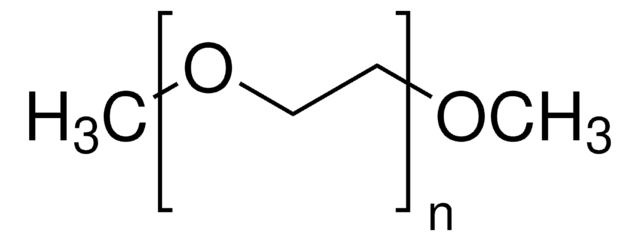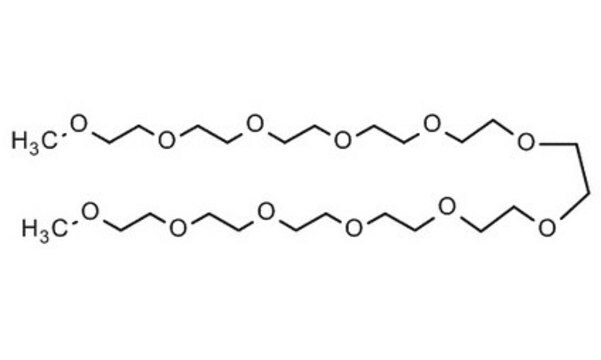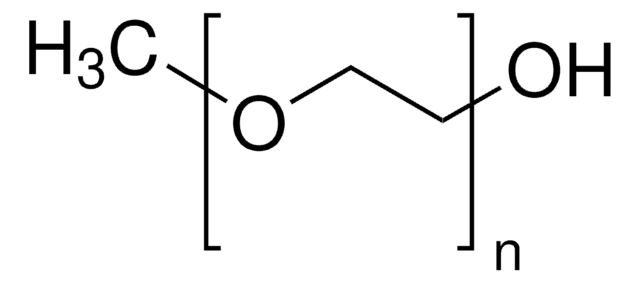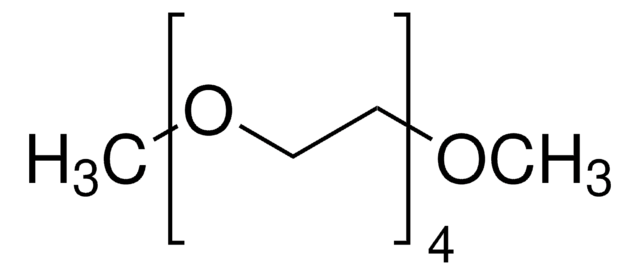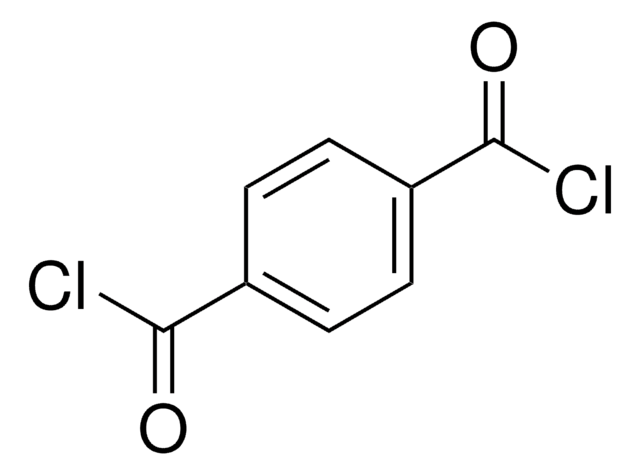445908
Poly(ethylene glycol) dimethyl ether
average MN 2,000, cross-linking reagent click chemistry
Synonym(s):
Polyethylene glycol, Dimethyl polyethylene glycol
About This Item
Recommended Products
Product Name
Poly(ethylene glycol) dimethyl ether, average Mn ~2,000
form
solid
Quality Level
mol wt
average Mn ~2,000
reaction suitability
reagent type: cross-linking reagent
reaction type: click chemistry
bp
>250 °C
transition temp
Tm 53 °C
density
1.08 g/mL at 25 °C
polymer architecture
shape: linear
functionality: homobifunctional
SMILES string
CO.OCCO
InChI
1S/C4H10O2/c1-5-3-4-6-2/h3-4H2,1-2H3
InChI key
XTHFKEDIFFGKHM-UHFFFAOYSA-N
Looking for similar products? Visit Product Comparison Guide
Application
- Paper Title: Molecular dynamics simulations for self-diffusion coefficients: The case of CO2, n-alkanes, and poly(ethylene glycol) dimethyl ethers - Studies self-diffusion coefficients using molecular dynamics simulations to provide insights into the behavior of poly(ethylene glycol) dimethyl ethers (OA Moultos et al., 2016).
Storage Class Code
10 - Combustible liquids
WGK
WGK 1
Flash Point(F)
312.8 °F - closed cup
Flash Point(C)
156.00 °C - closed cup
Personal Protective Equipment
Choose from one of the most recent versions:
Already Own This Product?
Find documentation for the products that you have recently purchased in the Document Library.
Customers Also Viewed
Our team of scientists has experience in all areas of research including Life Science, Material Science, Chemical Synthesis, Chromatography, Analytical and many others.
Contact Technical Service